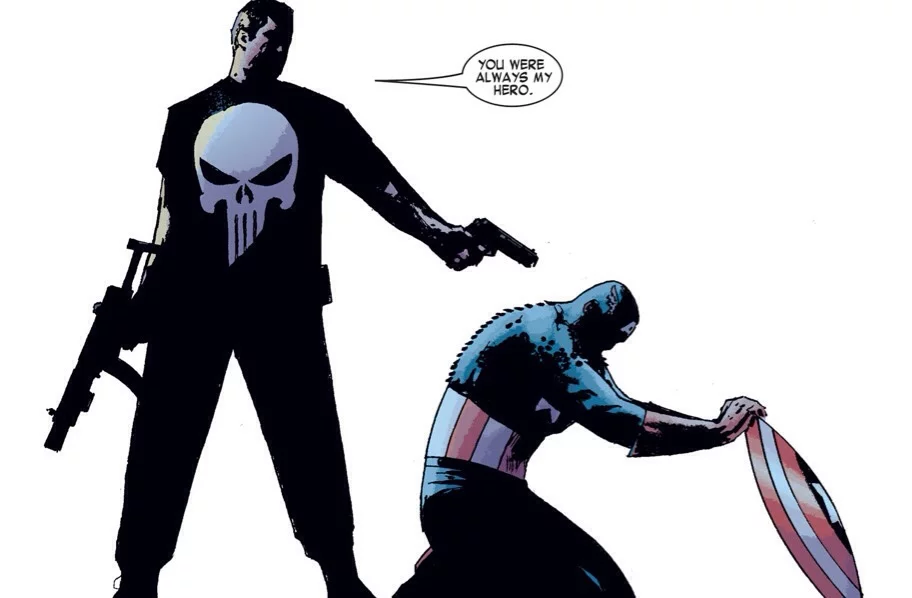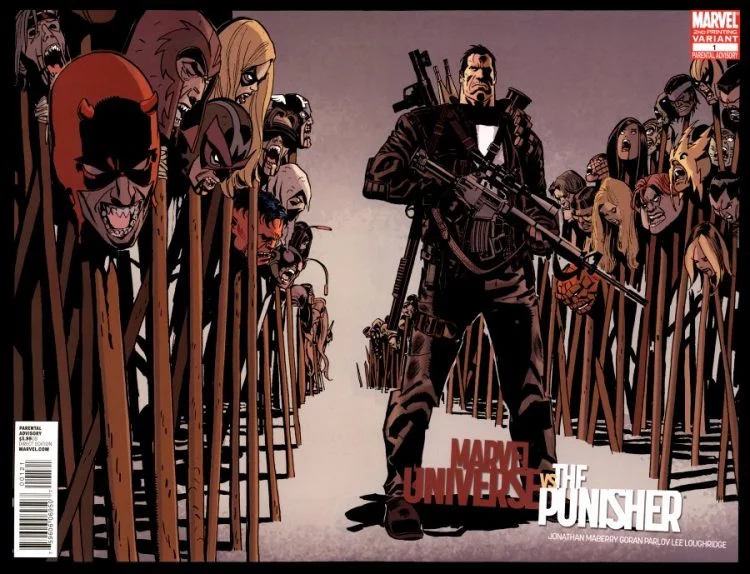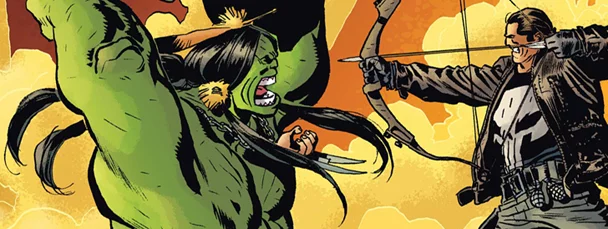In an odd case of premonition, last week’s TBT column about Marvel Zombies was the first time I wrote about the subject matter being a Marvel Comic property. Earlier this week, we lost long-time Marvel honcho and all-around comic-book legend Stan Lee when he passed away at 95 years old. This week, then, I took the opportunity to write about Marvel Comics again; I wanted to feature a comic-book story that included as many amazing Marvel characters as possible, and when I remembered one that did so while also putting the spotlight on my all-time favorite Marvel character, I knew exactly what I was going to write about.
Even though it seems like so long ago, at one time I was a bright-eyed, fresh-faced lad of 16 who was out looking for his first job. Call it fate, Karma, or just plain dumb luck, but I chanced my way into getting hired on at a comic book shop, an action that would cement my love of fantastical fiction and pave the way for my addiction to horror as well.
From the very beginning, I found one comic character in particular that I was quite enamored with. While so many other characters were granted super-powers or mutated into something that allowed them to be greater than the average person, there was always one hero in particular who not only was a non-superpowered being, but was also a very conflicted man and driven by the most intriguing of human emotions: revenge.
See, the bad guys killed his family, but they didn’t do it on purpose. He was a decorated American soldier and a genuinely good guy, but one fateful day when he took his wife and children to the park for a picnic, they were caught in a crossfire between two rival gangs, and only he survived. As he recuperated in the hospital, he took his sadness, rage, and anguish and compressed it all into a vow to his departed family: he would spend the rest of his life mercilessly punishing the guilty.
Thus Frank Castle became The Punisher, one of the most feared and misunderstood vigilante heroes of our time.

Frank has been around the Marvel Comics Universe since the late 1970s, first appearing in the pages of “The Amazing Spider-Man” and immediately captivating viewers. In the 30-plus years since, he’s brought a plethora of bad guys to justice and has seen an impressively wide variety of action and storylines. I think my favorite – and this is no joke – is when he went to the sleepy town of Riverdale to track a mob boss that bears an uncanny resemblance to a certain red-headed, all-American teenager…that’s right, it was a “The Punisher vs. Archie” crossover spectacular!
But we’re not here to talk about Frank’s various other exploits, we’re here to discuss one of his recent mini-series, titled “Marvel Universe vs. The Punisher.” (If you’re wondering why the title wasn’t “The Punisher vs. the Marvel Universe,” it’s because that storyline has already been done back in the late ‘90s, with the too-similar sounding title “The Punisher Kills the Marvel Universe.” I told you, Frank gets around!)
This series was written by veteran horror guru and New York Times best-selling author Jonathan Maberry, who makes it very clear in the story that he has a great understanding of Frank’s history. In this tale, Frank accidentally unleashes a bio-engineered virus while trying to stop some bad guys; he gets an up-close experience with the virus in its liquid form, and this “super-dose” gives him the immunity that the rest of the world doesn’t receive. The virus quickly turns the entire population of the world, superheroes and regular folk alike, into crazed monsters who revert to their most basic urges of aggression and sustenance – cannibals. While a small number of random people seem to have a natural immunity, the entire world succumbs very quickly, and when superhero cannibals start to form tribes and attack anyone and everyone they encounter, it’s up to The Punisher to do what he does best: discipline the evil.
The four-issue mini-series series sports a very “I Am Legend”-esque type of feel to it, while still making the storyline its own. The book looks great, from the post-apocalyptic-style covers to the dark and brooding interior sequences. Credit Maberry for creating a fun tale that really gives The Punisher the freedom to do what he does best. The conclusion of the tale is great as well, and it really adheres to the principles that The Punisher holds true, instead of going for a typical “happy” ending.
I’ve actually had the opportunity to speak with Maberry on many occasions, and we’ve had a discussion about how the creatures featured in this tale are different and separate from the “traditional” definition of zombies – but they’re darn close! Indeed, at the very beginning of the story, a news anchor asks a scientist if the people suffering from the disease are akin to the afflicted folks in the film “28 Days Later.” This is the first time a Rage-type virus is shown impacting the entire Marvel Universe – heroes, villains, and civilians alike – so the originality of the content is obviously fairly high here.
The series definitely retains much of the feel of what an utterly destroyed society would look and feel like years later, even if some minor suspension of belief is required from the standpoint of the super-powered beings. For some folks unfamiliar with the Marvel characters, there may be some initial confusion in the tale in regards to what exactly it takes to kill someone affected by the virus; certain characters are shown being killed with one gunshot to the head/chest but others can be chopped up into bits and still come back to life. Remember that even though many of these characters are suffering from the virus, they still retain their superpowers; this is the case with the oft-killed and oft-reanimating Deadpool, whose mutant power makes him incredibly difficult to permanently destroy, despite Frank’s repeated attempts.

The series sports a really fun style of artwork, utilizing a quirky look that I might best describe as a mix between current comic drawing and the “retro” blocky-style of artwork. Credit series artist Goran Parlov for the fun visuals. The story flows pretty smoothly, even using some effective flashback sequences towards the end of the series to remind the reader about not only what has happened earlier in the tale but also information about The Punisher’s pre-vigilante life – we see Frank’s family’s death for the umpteenth time in his history, but it still looks good.
While not your “usual” Marvel tale by any stretch of the imagination, this is still a great story that most folks should be able to easily enjoy. I may be letting my “fanboy” nature muddy things a bit here, but folks who are especially familiar with the Marvel Universe will get an added level of enjoyment out of seeing so many superheroes and villains in a very new and unique situation. A litany of familiar faces grace this mini-series, including (but not limited to) Spider-Man, Wolverine, Fantastic Four, Daredevil, Captain America, Ms. Marvel, Thor, X-Men (Gambit, Beast, Rogue), Hawkeye, the Hulk, Moon Knight, Luke Cage, Ant-Man, Spider-Woman, Falcon, Nick Fury, Doctor Octopus, Shocker, Green Goblin, Juggernaut, Magneto… this list goes on and on.
It’s one of my favorite “large-scale” Marvel Comics tales, and I’m looking forward to getting the copies out of my meticulously-organized comic-book filing system to re-read them soon, in honor of Stan “The Man” Lee. Excelsior!


